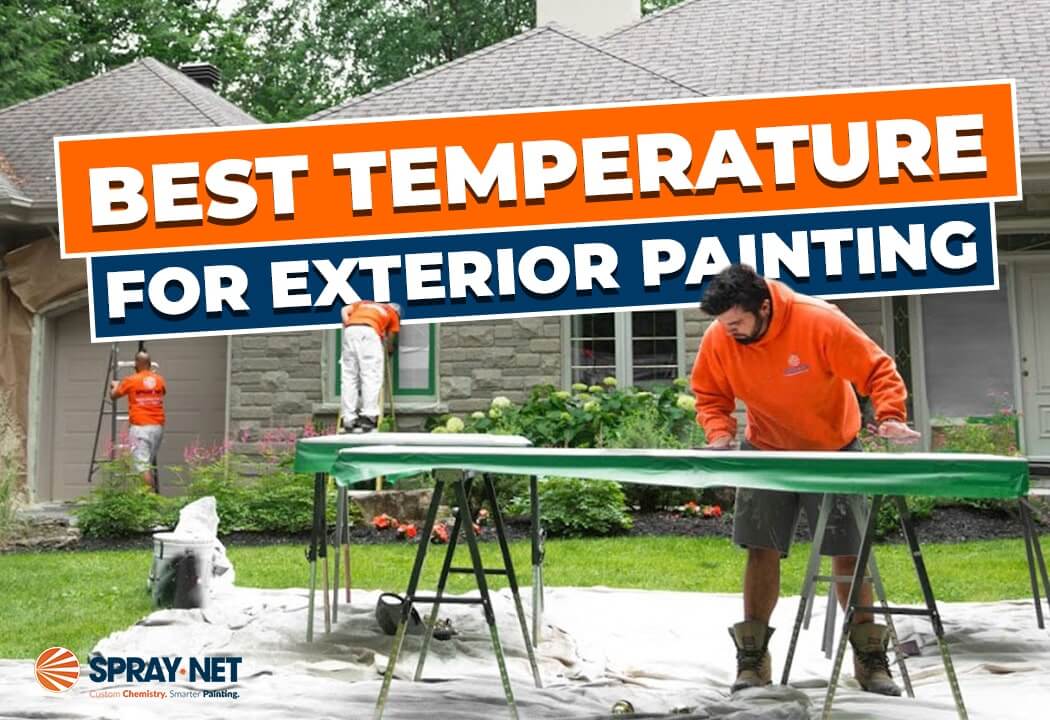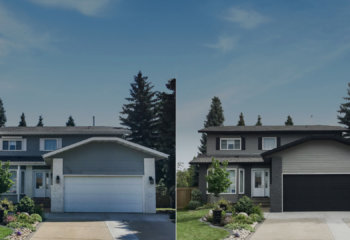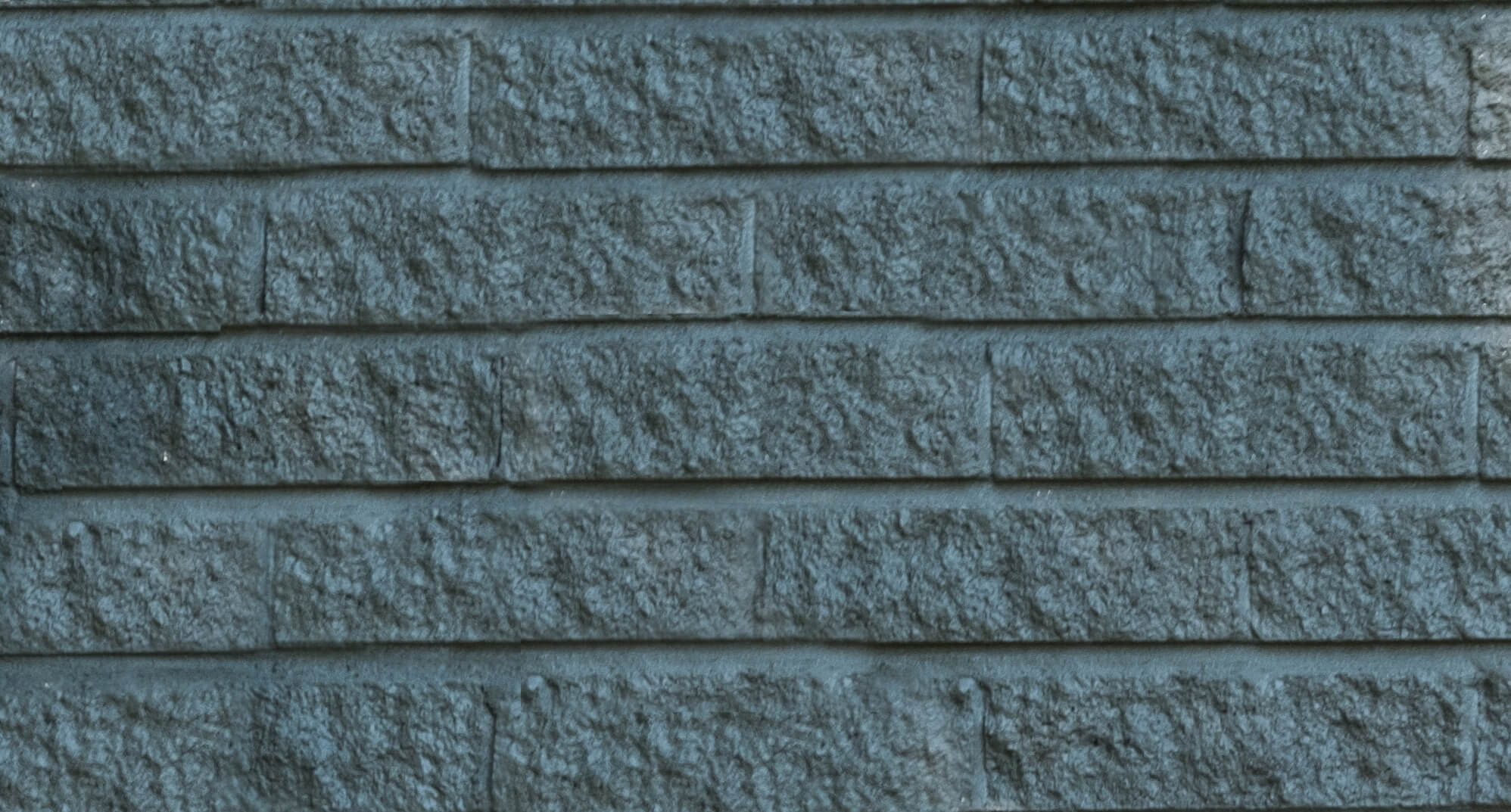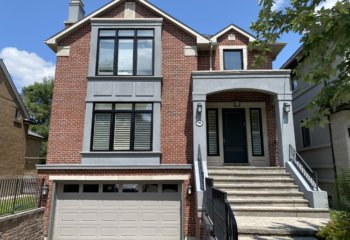What is the best temperature for painting your home’s exterior? It’s a highly Googled question, and for good reason. Weather can make or break a paint job.
While selecting the right exterior paint and performing proper surface preparation are vital for a successful paint job, the drying, or curing, of the paint film is equally as important. One can argue that it’s the most critical aspect in achieving a long-lasting factory finish that won’t peel and doesn’t require yearly maintenance, saving you valuable time and money.
Unfortunately, the recommended application conditions on paint labels can sometimes seem nearly impossible to meet, leaving you with more questions than answers:
- Air and surface temperatures must be between 35°-90°F (2° to 32°C). Great, I didn’t even consider surface temperature… now I have to google how to measure surface temperature.
- Do not paint when rain or heavy condensation is expected. What happens if I run into unexpected rain while painting?
- The temperature should be in the suggested range and above the dew point for at least 48 hours after application. Two days? But what if the temperature dips, or what if it rains a day after I paint?
The good news is with our extensive experience painting thousands of homes, we’ve gathered valuable insight to help you understand the best weather conditions for painting the exterior of your home. We’ll cover which conditions to avoid and why and what to do if you run into unexpected weather conditions during your project.
Why does weather matter for exterior painting, anyway?
Before we dive into the actual answer, it’s important to understand the role weather plays when it comes to exterior painting.
Weather directly impacts the critical process of film formation during the drying process. Film formation occurs when water in paint evaporates, leaving behind the actual paint solids (or the “stuff” in the paint) on the substrate. The paint solids come together, or coalesce, to form a final paint film. This film determines the paint’s properties- it’s what allows the paint to do what the paint can advertises: strong adhesion, UV resistance, scratch resistance, etc. This entire process of water evaporation and drying/curing is highly dependent on exterior weather conditions.
Weather & ambient air conditions you need to consider when painting the exterior of your home and our recommendations:
- Temperature: you won’t see professionals painting when it’s too cold. Cold temperatures don’t allow water-based coatings to form a proper, coalesced film because it impedes the water from properly evaporating. The water in the coating can even freeze, causing it to expand and crush the polymers in the resin. Therefore, cold temperatures should be avoided at all costs, for all surfaces. If the temperature is too hot, on the other hand, the coating may have a hard time leveling, or spreading out, evenly on the surface.
Our Recommendation: some sources say to only paint between 59°- 77°F (15°-25°C), but not all paints are made the same and therefore, there’s no one right answer when it comes to temperature ranges. We simply recommend following the ranges on the paint manufacturer’s label, as some coatings are formulated for application in colder or warmer temperatures. Based on our own experience, however, when it comes to so called danger zones, our advice would be to avoid painting below freezing point (waiting at least 48 hours after a day has reached freezing point) and above 95° F (35°C) as you don’t want your paint to instantly cook, preventing the coating from actually bonding to the surface.
- Rain: Rain is one of the most obvious weather conditions that can ruin a paint job. If rain occurs during or shortly after painting, it can wash away the paint, leaving behind streaks or patches.
Our Recommendation: try to schedule your paint job during a dry week. If it doesn’t rain within 12 hours of painting, if it’s not too humid and your home is in the sun, you’re more or less in the clear. The top part of the paint film will dry during these first 12 hours, and the film will continue curing over the next 30 days. Ideally, conditions should also be dry for at least 2 days before you start painting to ensure a completely dry surface. Paints are formulated differently, so check the paint can label for specific requirements, as some paints may be more restrictive than these general guidelines.
- Dew Point: dew point is the temperature below which water vapour will turn into drops or condensation on a surface. It prolongs drying time and can cause improper adhesion by preventing the paint from bonding to the surface, leading to peeling, blistering and chipping.
Our Recommendation: the industry standard is to paint on a surface whose temperature is at least 5 While the weather app on your phone will report dew point for the day, that doesn’t necessarily reflect the dew point at your home (as shade from trees, for instance, can affect dew point). To accurately measure dew point at the time of painting, you’ll need a dewpoint meter. To measure surface temperature, you’ll need an infrared thermometer.
- Humidity: excessive moisture in the air prolongs evaporation and impedes proper film formation, leading to extended drying times, potential drips or runs, and an increased likelihood of dust or debris sticking to the wet surface. The result? Say goodbye to a smooth, factory finish. Relative humidity is something professional painters measure in the morning before painting. It is the measure of moisture in the air, expressed as a percentage of the total amount possible at a given temperature.
Our Recommendation: You can paint when humidity is below 85%. Like dew point, the humidity level reported via your mobile weather app won’t reflect the specific humidity level at your home. If you invest in a dew point meter, you’ll be happy to know they also measure humidity levels.

Additional Tips for Painting the Exterior of Your Home in Various Weather Conditions:
- Avoid painting in direct sunlight: Direct, strong sunlight can cause paint to dry too quickly, leading to streaks and uneven colour. During peak summer months, start painting in the sun so you can move to the shaded areas during the afternoon, when the sun is at its strongest. Fun fact: we follow a methodical exterior painting process where we use an application to know exactly when the sun will hit each wall of the house.
- Steer clear of high winds: Wind can introduce dust, dirt, or debris into the wet paint, resulting in an uneven and rough surface. It also just makes it a lot harder to apply paint, as the paint dries too quickly on the surface and can cause skinning, which is when the layer of paint dries on the surface but remains tacky or sticky underneath, forming a skin-like layer. This happens when the outer layer of paint dries quickly, creating a barrier that prevents the underlying layers from drying properly. This can lead to major adhesion issues, as the skin layer makes it extremely difficult for water vapour to escape. In the process, this can lead to cracking or “alligatoring” (cracking that looks like an alligator’s scales).
- Allow sufficient time for the job: never attempt to complete a large painting project in a single day, especially when working in direct sunlight. Rushing the process may push application temperatures beyond the recommended level, compromising the quality of the paint job.
What to do if weather suddenly takes a turn for the worse:
If you encounter unideal weather immediately after painting your home, just give it some time before making any drastic decisions. We recommend waiting a few days (remember that exterior paint takes up to a month to fully cure), as paint issues may clear up on their own if you’re lucky. Unfortunately, if this isn’t the case then re-application will be needed.
How does Spray-Net work around the weather to provide a streak-free, factory finish that won’t peel?
Our goal with every exterior painting project is to deliver a durable, factory quality finish: the kind of finish that won’t peel, looks brand-new (not repainted) and eliminates the need to repaint every few years.
Not only did we have to formulate a line of industrial-strength, surface-tailored exterior paints and coatings to do this, we had to think of a way to optimize the outdoor application of these high-performance coatings. As we just learned, weather conditions can make or break a paint job, right guys?
During on-site application, we use a combination of different tools to measure dew point, surface temperature, ambient temperature and other variables. Then, we input these variables into our proprietary software, the Spray-Network, which then guides our professional applicators on how to adjust the paint formulation itself (yep, right in your driveway) to either speed up or slow down dry time to achieve a durable factory finish given the weather that day. We created a way to control our coatings since we can’t control the weather. The result? Our renowned factory finish and the ability to offer our clients an impressive 15-year no-peel warranty.
Subscribe to our blog & newsletter.
This is the advantage of subscribing to our blog.













